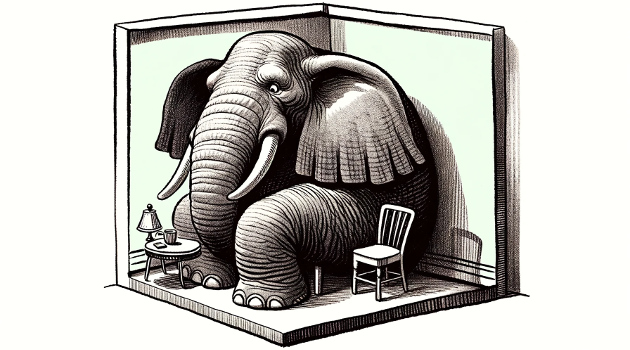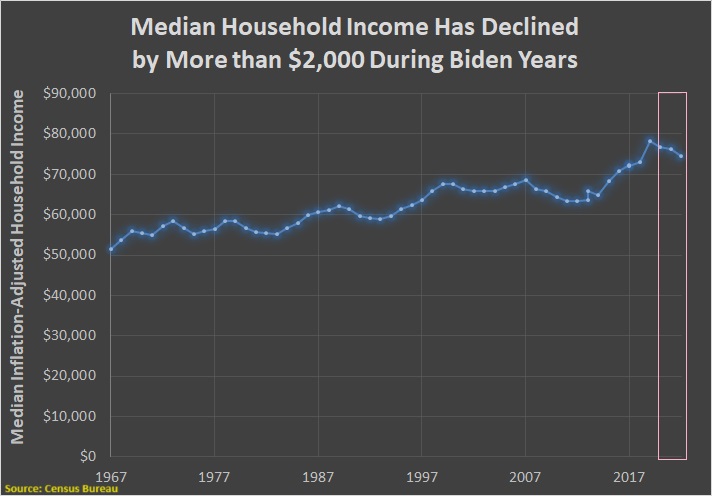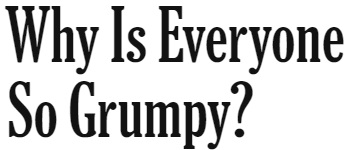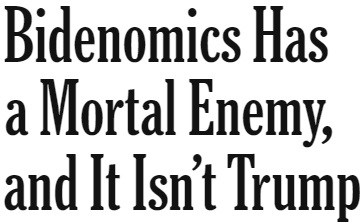Bidenomics is unpopular for the simple reason that prices have been rising faster than incomes have been rising.
And when people are sinking – or even if they are treading water – that is a recipe for dissatisfaction.
Yet people like Paul Krugman claim that there is a “Biden boom.”
Today, we are going to look at other examples of how journalists are trying to rationalize and defend Bidenomics.
We’ll start with a conversation in the New York Times between Peter Coy and Binyamin Appelbaum.
Peter Coy: …Americans seem very grumpy about the economy lately, despite what looks like some pretty good news. …Binyamin Appelbaum: …there are basically two flavors of answers to this question. The first looks at the economic data and sees good reason for America’s bad mood. …The second concludes that people are mad despite the economic data. Our colleague Paul Krugman is on that side of the debate. I want to introduce a third kind of explanation. …when people say they’re unhappy about the economy, we should understand that primarily as a statement of concern about where we’re headed. …Coy: …To an economist, Bidenomics is a set of policies… More public investment. Empowering workers. More competition. …But when most people hear “Bidenomics,” they just think “Biden’s economy” — the state of the economy while President Biden is in office. And they aren’t happy about it. …Appelbaum: In an NBC News poll released last weekend, only 19 percent of respondents said that they were confident the next generation would have better lives than their own generation. …this is the great failure of the Biden administration and its economic policies: Americans simply aren’t convinced that the future is bright. …Coy: Yeah, pessimism is a tough problem to fix. We need someone like Franklin Roosevelt, who lifted the spirits of the nation when things were much worse than they are now. Actually, Mr. Biden has modeled himself a bit on Roosevelt. He’s inveighing against crony capitalists, saying the government is here to help and so on. …Appelbaum: I’m skeptical that prices are the problem. ..Americans aren’t behaving like people crushed by inflation. Consumer spending has been a lot stronger this year than pretty much anyone predicted. And the pace of price increases has slowed down to something close to normal… I think what we’re experiencing is a crisis of faith in the narrative of capitalism — at least as practiced in the United States in 2023 — as an engine of shared prosperity.
Some of the above conversation is reasonable. People won’t be happy, for instance, if they think the future is grim (and there are reasons to be worried).
But they largely ignored or dismissed the elephant in the room, which is that inflation-adjusted earnings have been declining or – at best – stagnant.
And I rolled my eyes when Coy described Bidenomics as being about “empowering workers.”
I also didn’t know whether to laugh or cry when Appelbaum asserted that the current malaise is because people are having “a crisis of faith in the narrative of capitalism.”
In other words, Biden makes government bigger and more expensive. And when the economy suffers, people at the New York Times think that’s the fault of capitalism?!?
Next we have an article in the Washington Post by Jeff Stein and Taylor Lorenz.
Olive’s video about a $16 McDonald’s order went viral, racking up hundreds of thousands of views. After a McDonald’s revenue report recently, the same post went viral again earlier this month… Posts…tied the cost to President Biden’s economic management: Inflation, the theory went, had gotten so out of control that the price of a fast-food burger was approaching $20. …In reality, inflation has been steadily subsiding… The Big Mac conundrum reflects what Biden aides and senior Democratic officials regard as one of their most vexing challenges… Even as inflation has fallen…and although the labor market has remained hot amid strong growth, voters still don’t like the economy, and they blame the president. …Some economists…have been astounded by polling data on Biden’s economic approval and surveys of consumer sentiment, where results during the Biden administration are similar to the Great Recession…and that it is vital to make clear that this remains by many measures one of the best recoveries in modern U.S. history.
Stein and Taylor also ignore the elephant in the room. They dismiss concerns about inflation and they totally ignore the problem of what’s happened to inflation-adjusted income.
But the most absurd part of the article was the assertion from “some economists” that the country is experiencing “one of the best recoveries in modern U.S. history.”
I went to the Minneapolis Federal Reserve’s webpage where you can compare recessions and recoveries.
Here’s the chart that the site auto-generated when I compared Reaganomics (in green) and Bidenomics (in red). Reaganomics wins by so much that the chart doesn’t even show the peak for Reagan.
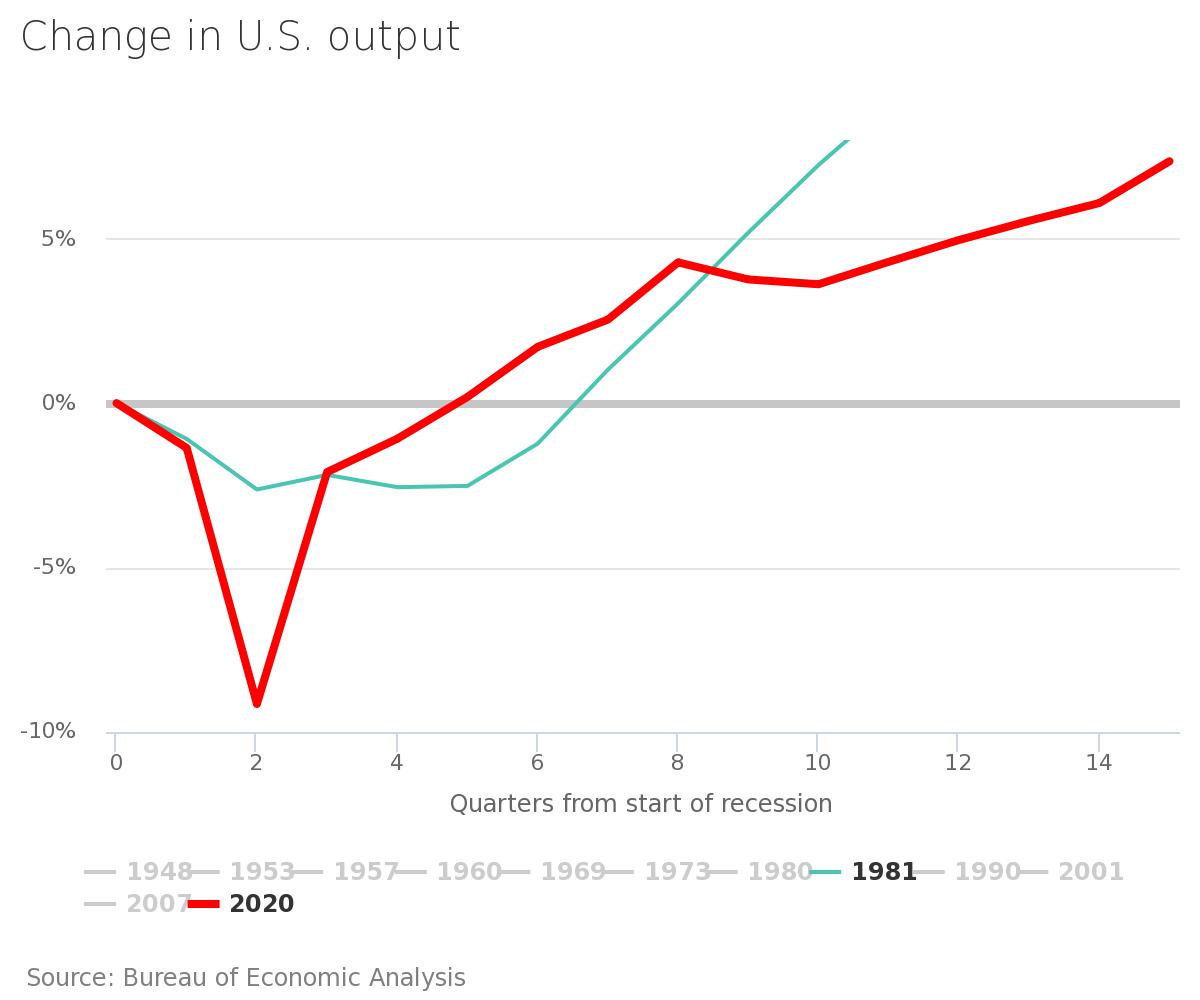
To fully visualize and appreciate the superiority of Reaganomics, I created my own version of the chart, based on the Minneapolis Fed’s data.
You can see that GDP expanded nearly twice as much during Reagan’s recovery (13.1 percent) as during Biden’s recovery (7.4 percent).
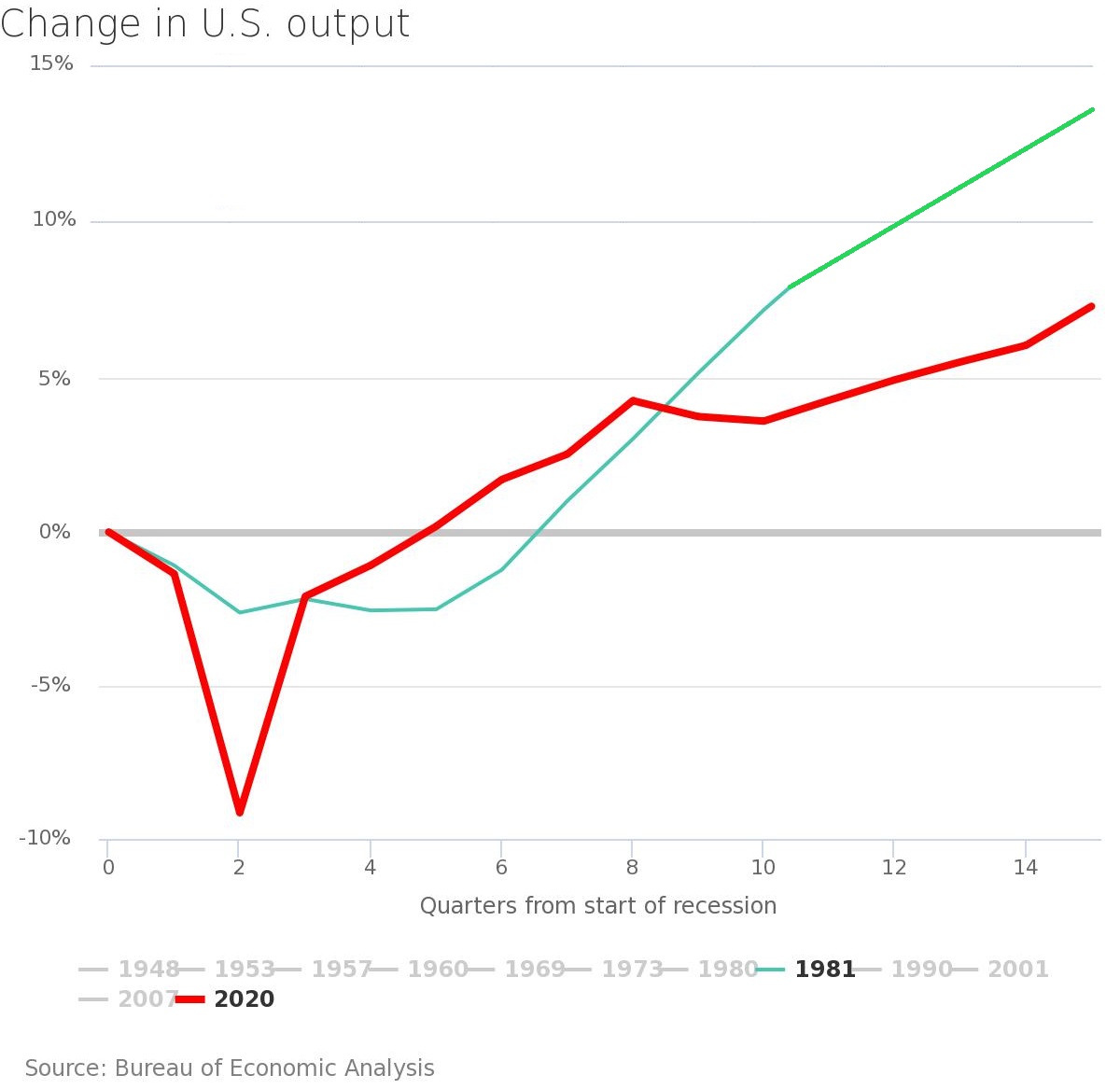
Game, set, and match.
Let’s conclude by looking at a column in the New York Times by Karen Petrou. She admits that voters are unhappy and she writes that they have good reason to be unhappy.
As the White House proclaimed U.S. prosperity, a New York Times/Siena College poll found that 59 percent of voters in six key swing states said they had more confidence in Mr. Trump’s ability to manage the economy than in Mr. Biden’s, regardless of whom they thought they’d vote for. Zero — yes, zero — respondents under 30 in three of the swing states said they considered the economy “excellent.” The West Wing may believe Bidenomics is working because the macroeconomic gurus at the Federal Reserve are telling the White House it’s working. But Bidenomics has failed to create sufficient tangible improvement in the lives of most voters in a world in which groceries still cost more than they did a year ago, average rent and mortgage rates have spiked and health and child care grow ever more unaffordable.
The column has plenty of good analysis, especially her observation that prices have been rising faster than incomes.
But I think her main point is wrong. She wants readers to think that the real problem is inequality.
…income inequality is worse than ever. …In a nation this unequal, the income generated by a growing G.D.P. is so unevenly shared that the impression of widespread prosperity falls apart. …America’s top 1 percent always got far more than 1 percent of national income and wealth, but they have rarely gotten as much as they do now. …What’s different now is not only that inequality is more deeply entrenched but also that Americans are less inclined to hope that even as they fall behind, they and their children will soon catch up.
Needless to say, Ms. Petrou presents no evidence to suggest that voters with modest incomes be happier if rich people suddenly had less income.
And the reason that she presents no evidence is that only a small share of the population is motivated by envy. Normal people with modest incomes are more interested in having their incomes go up instead of having someone else’s income go down.
P.S. Reaganomics also easily triumphed in comparisons with Obamanomics.

